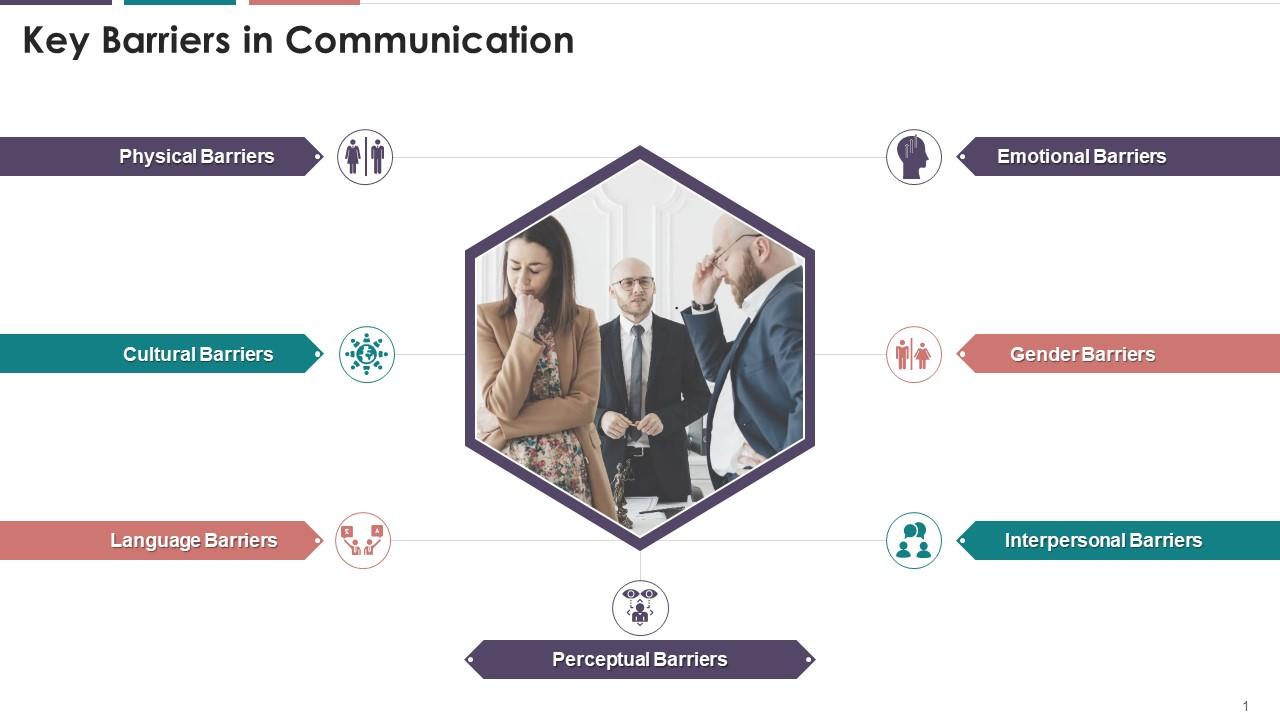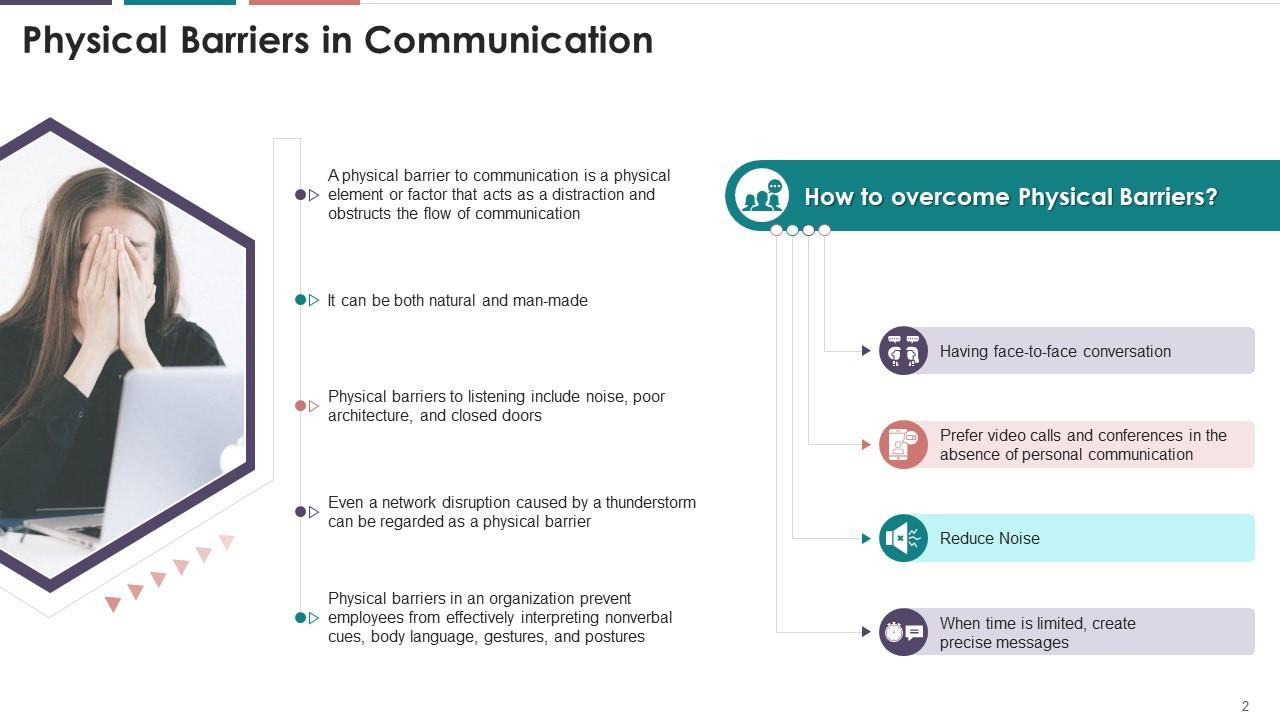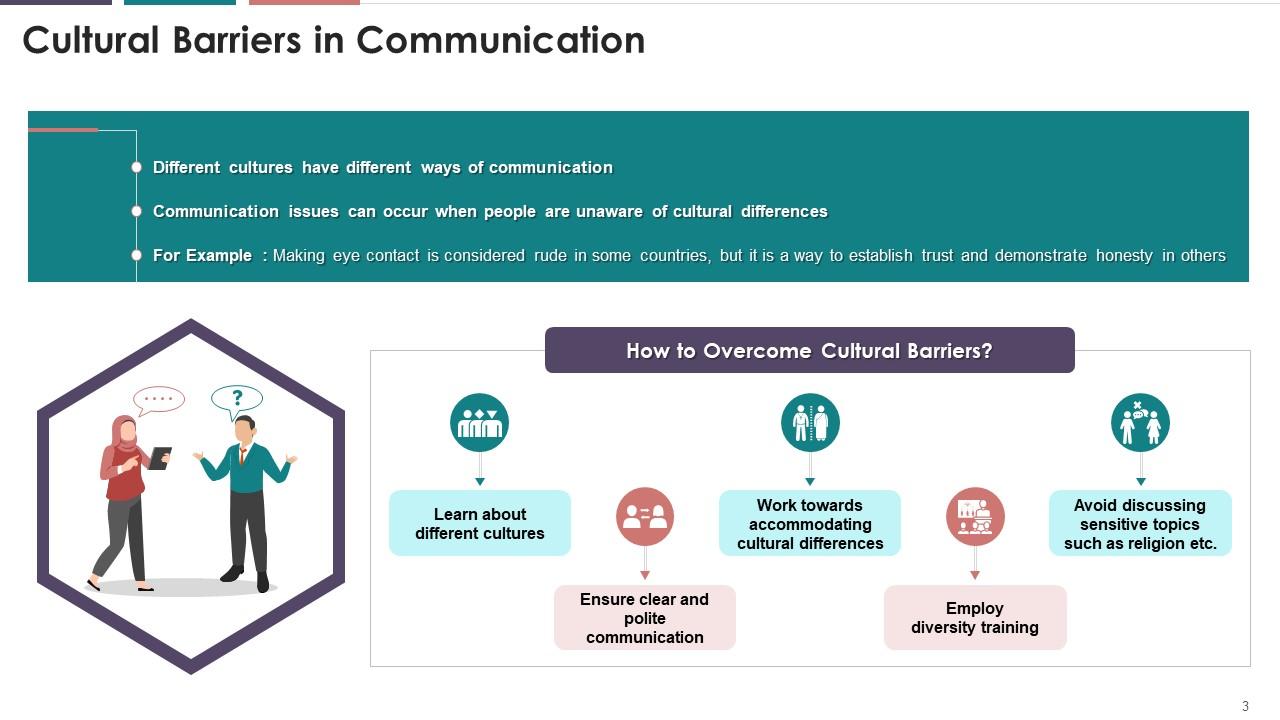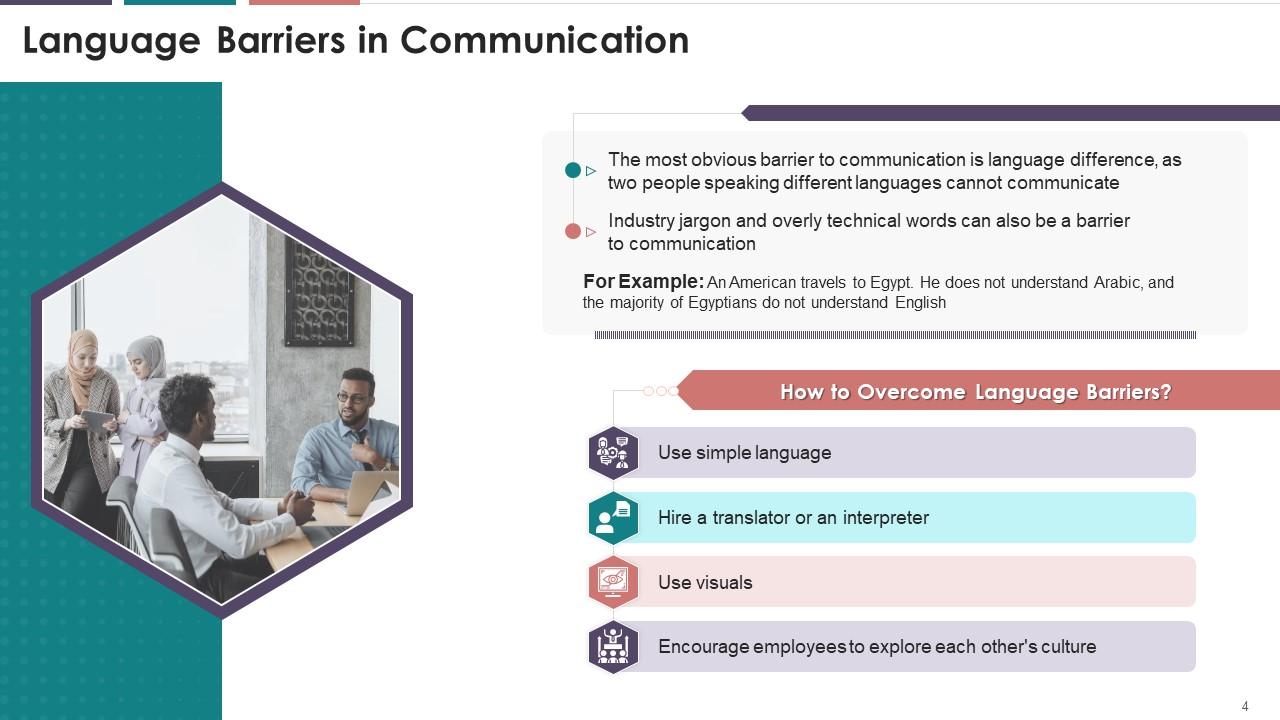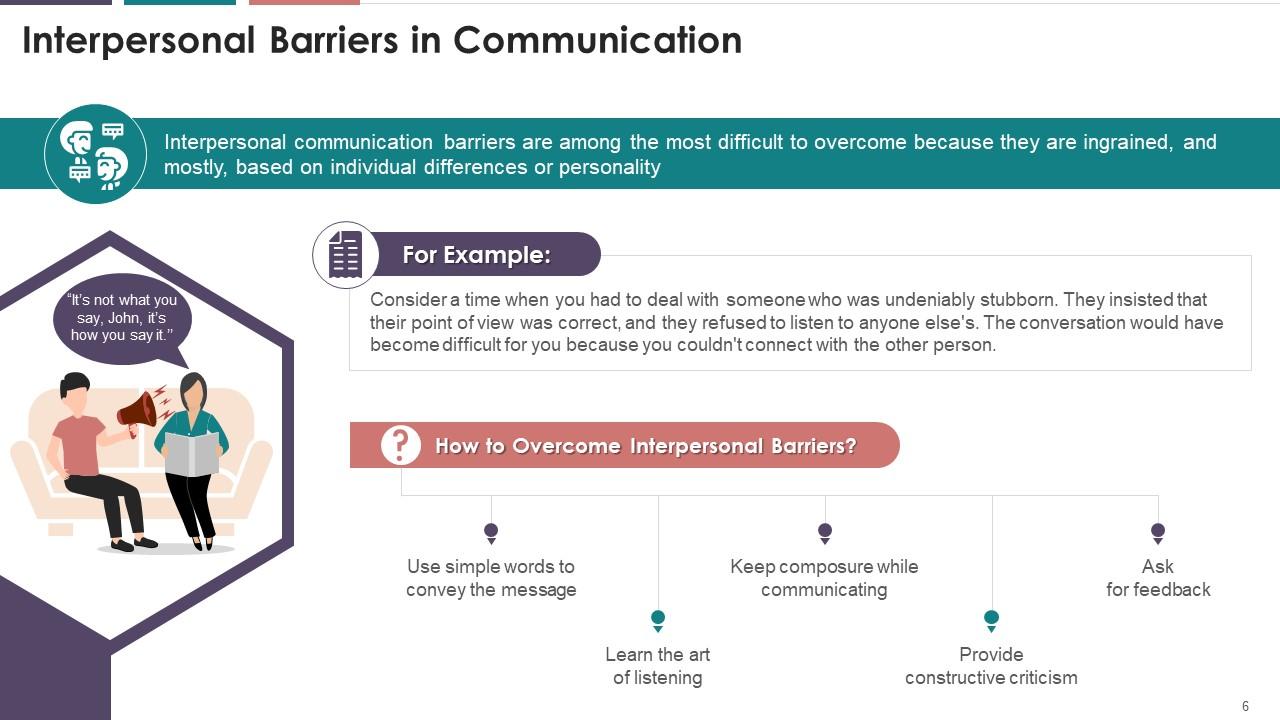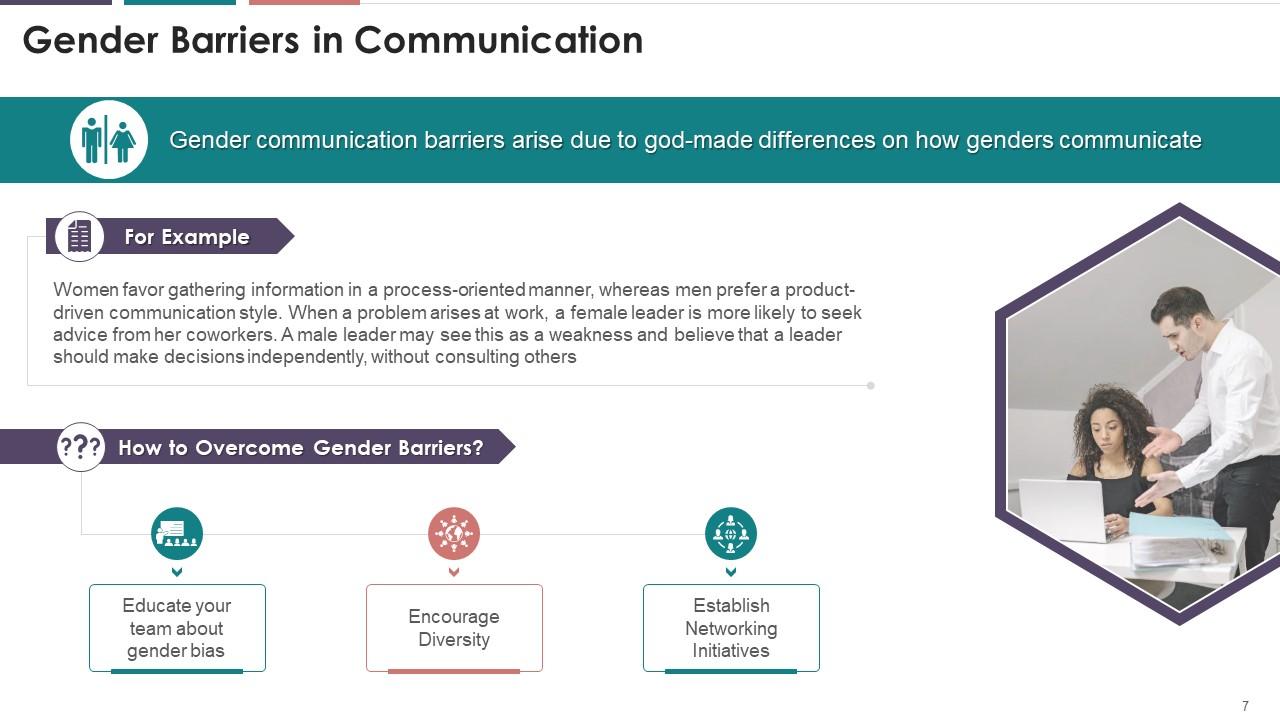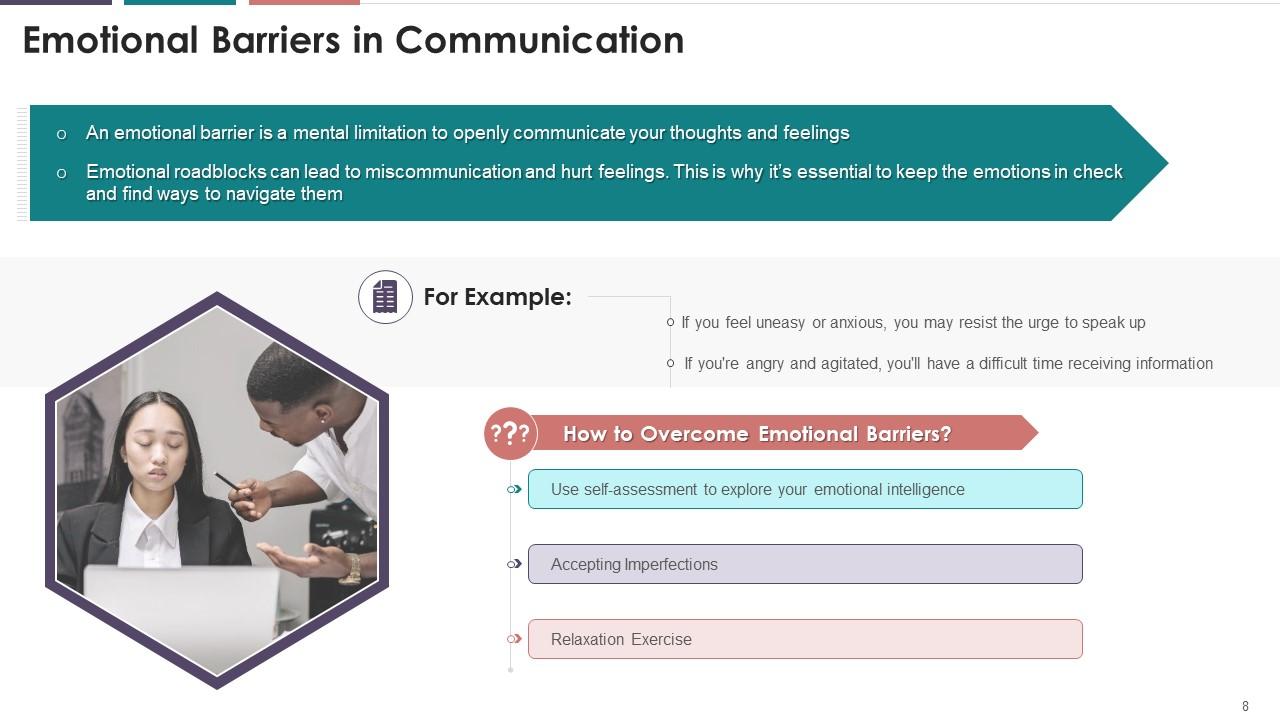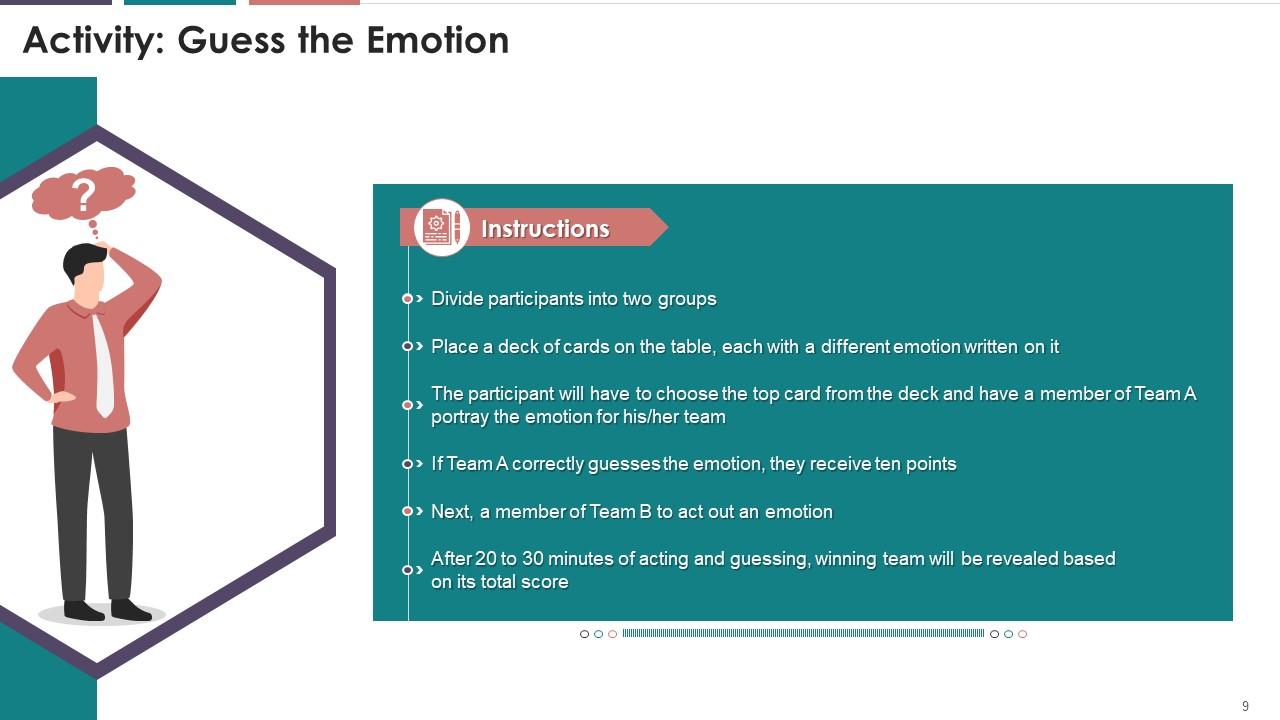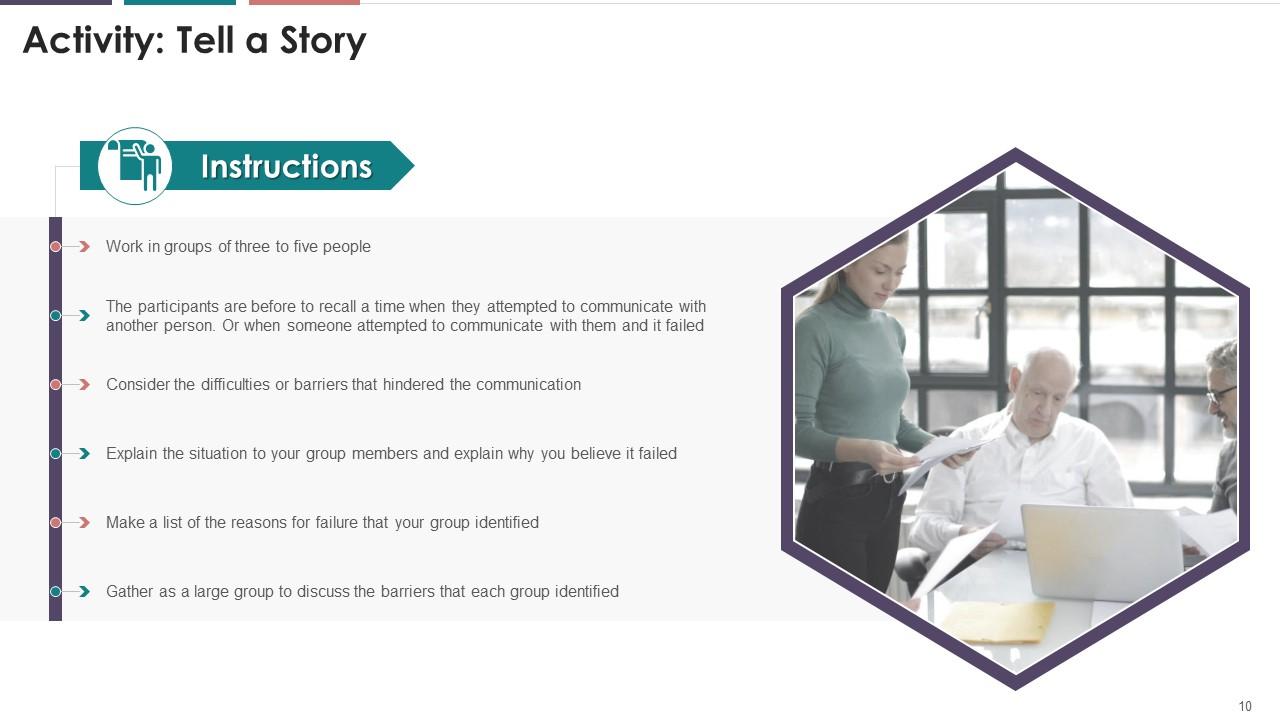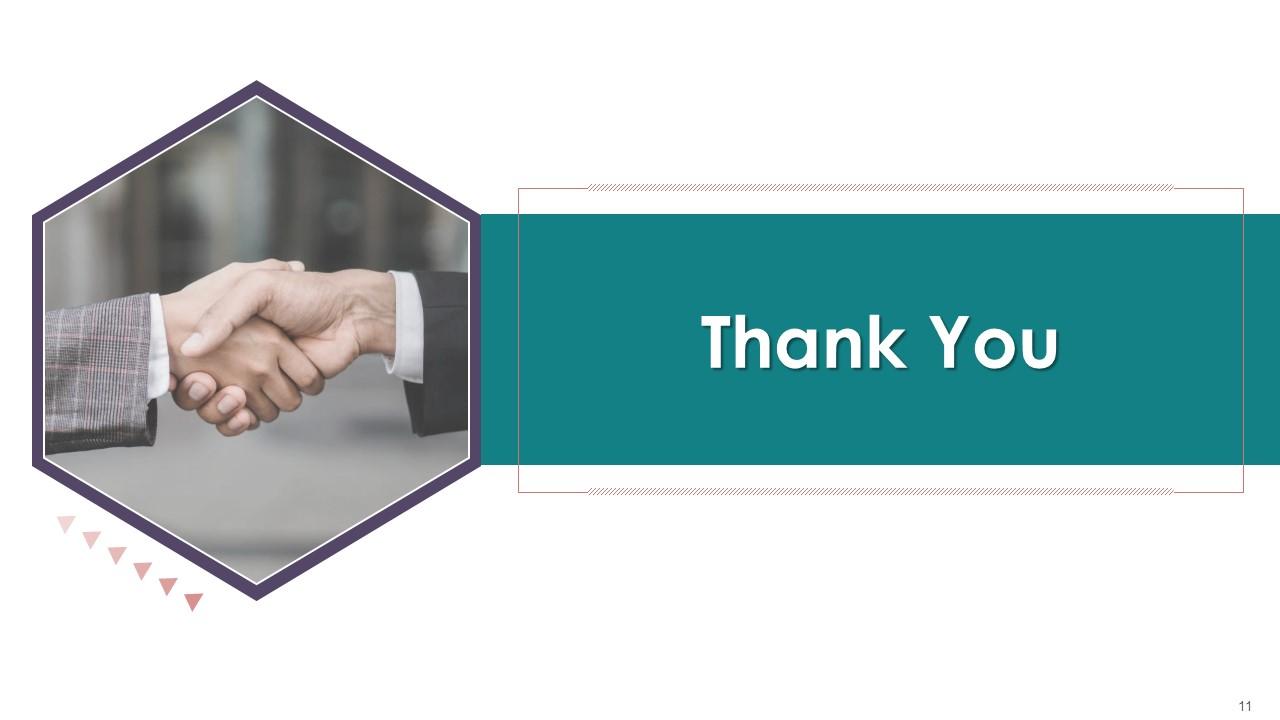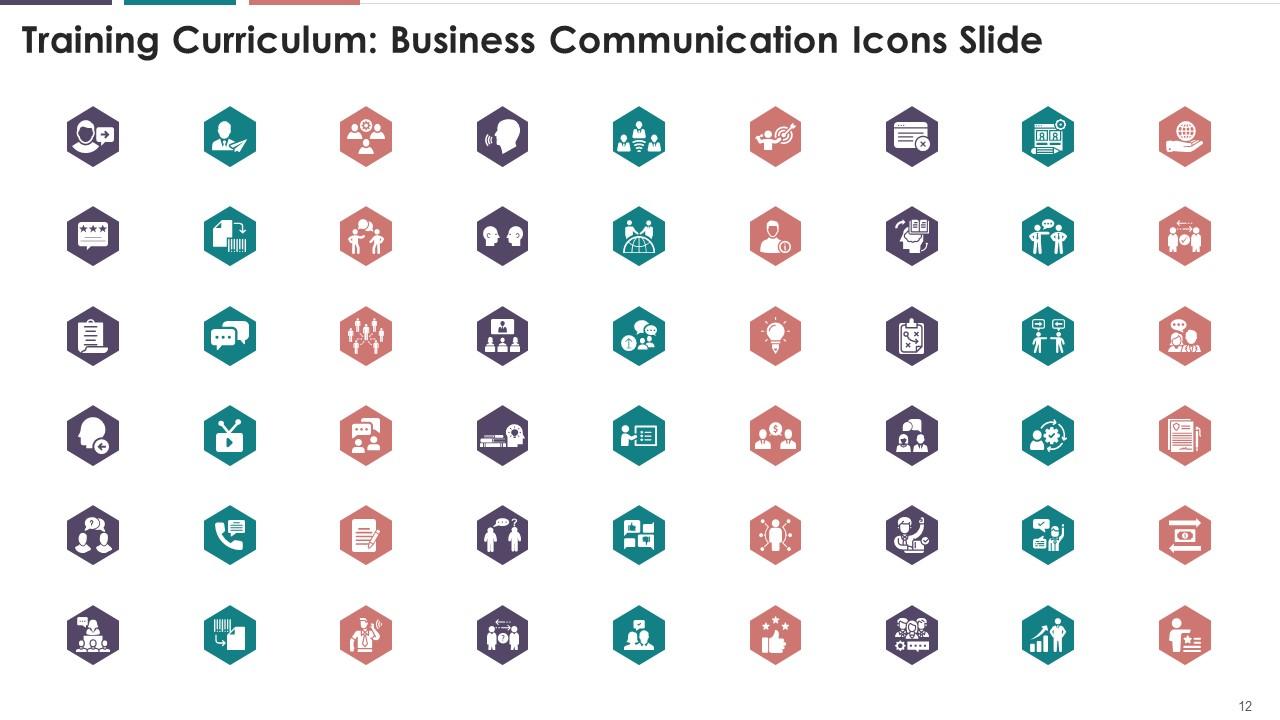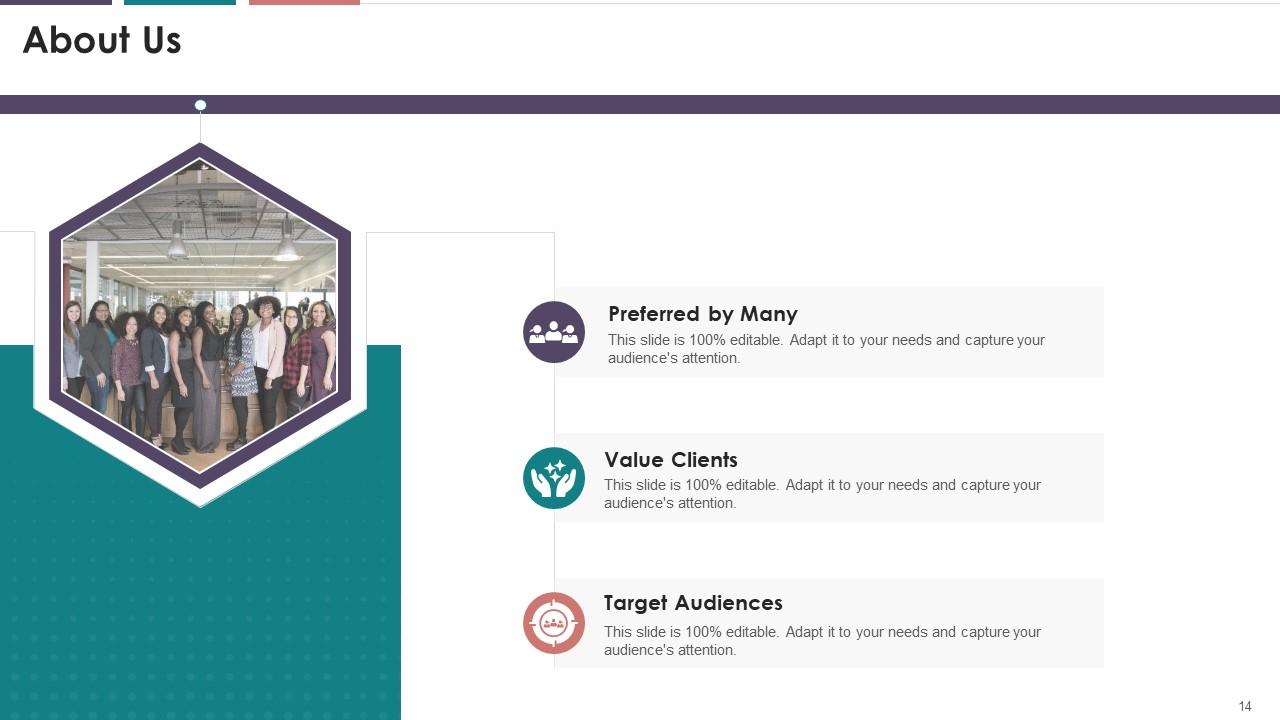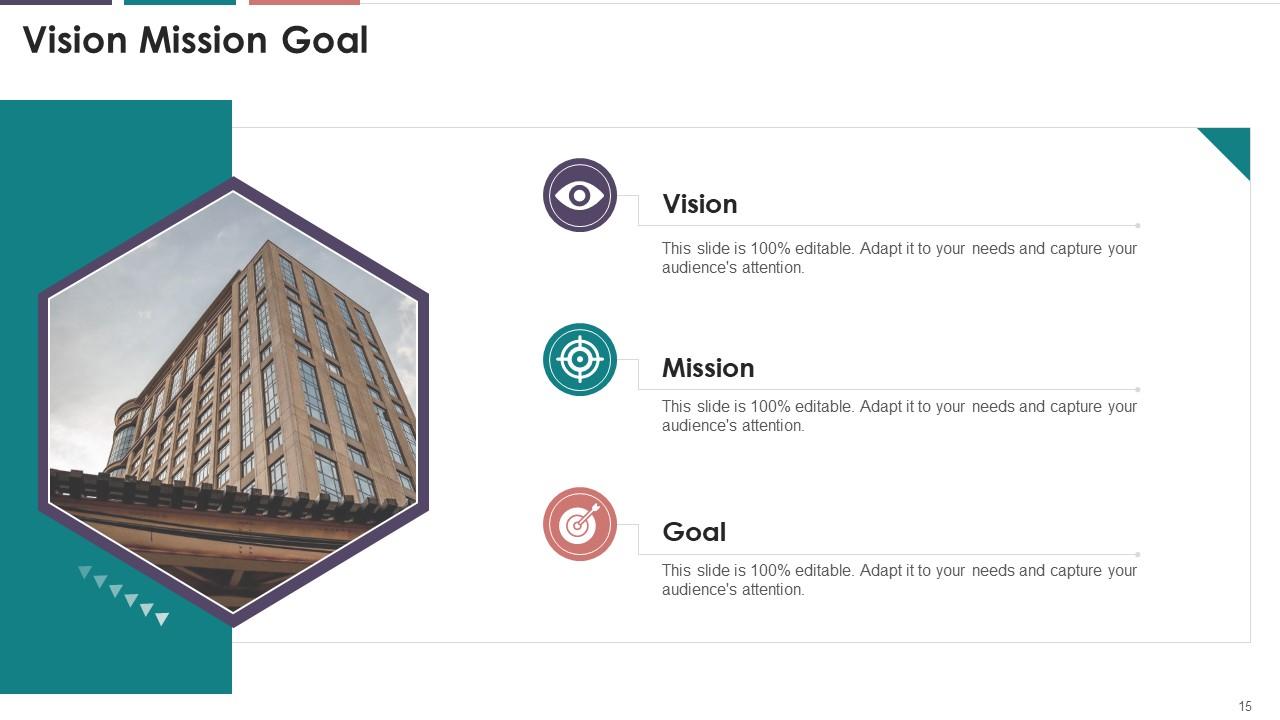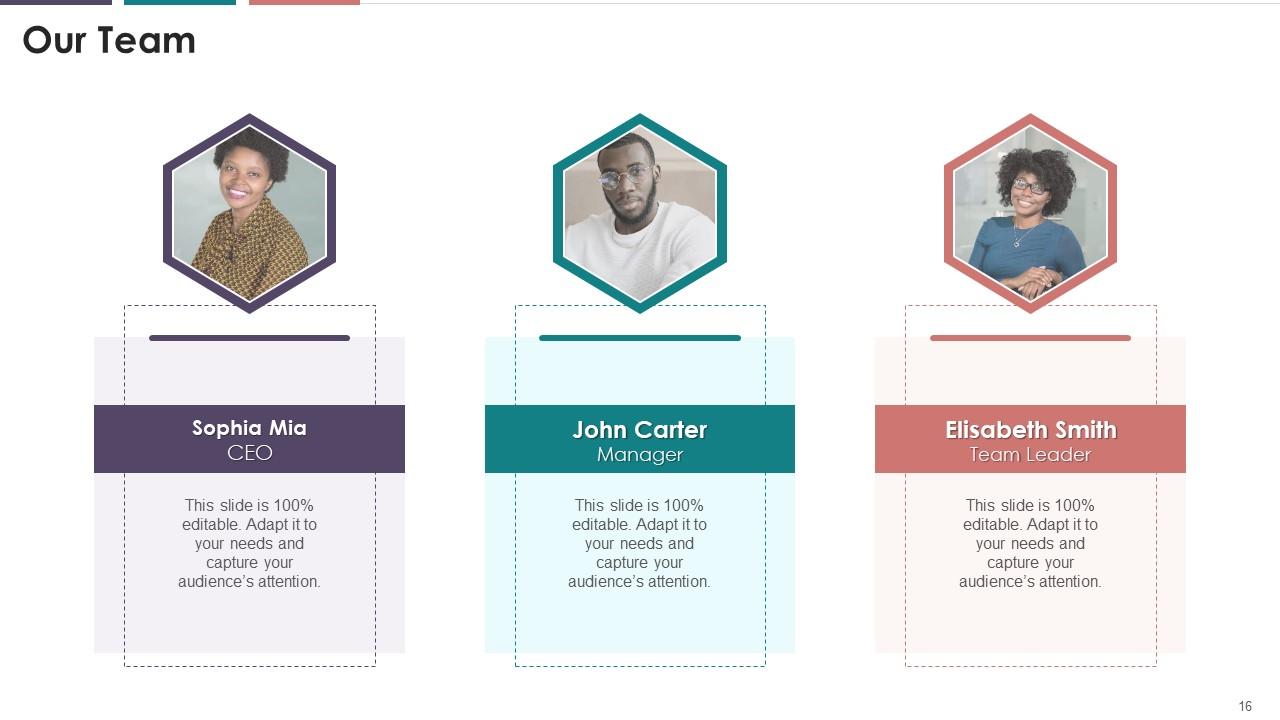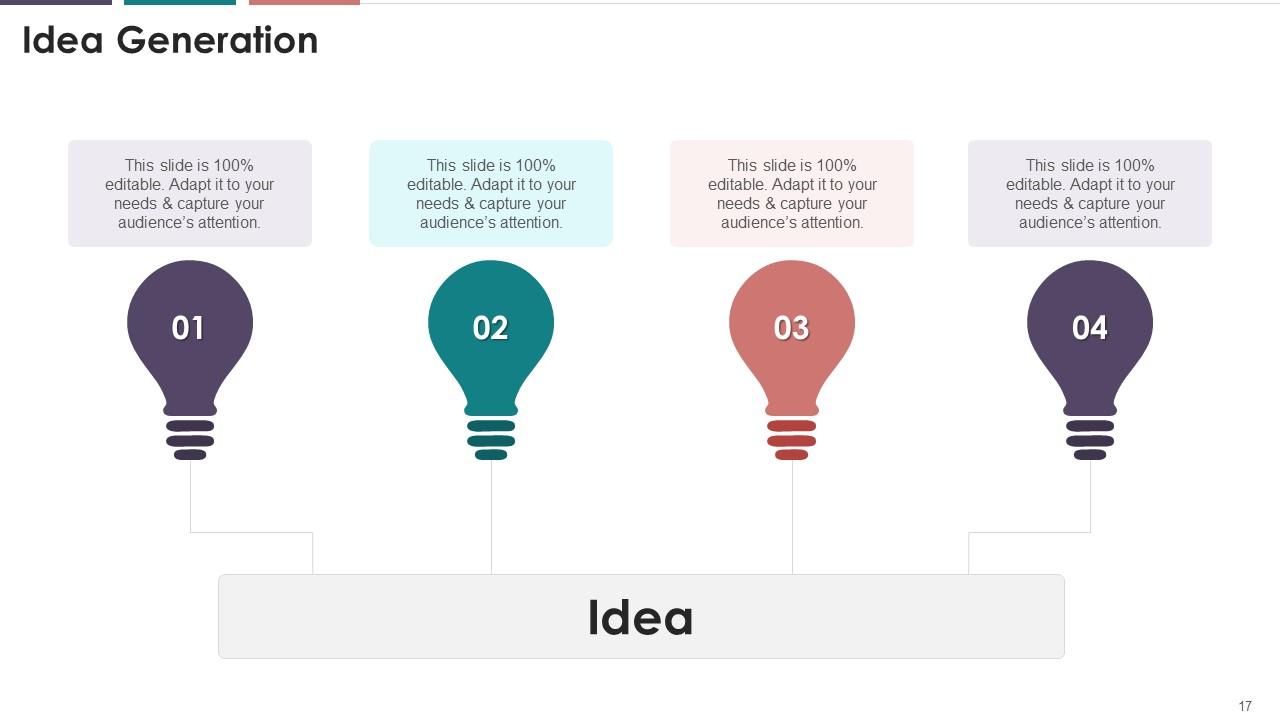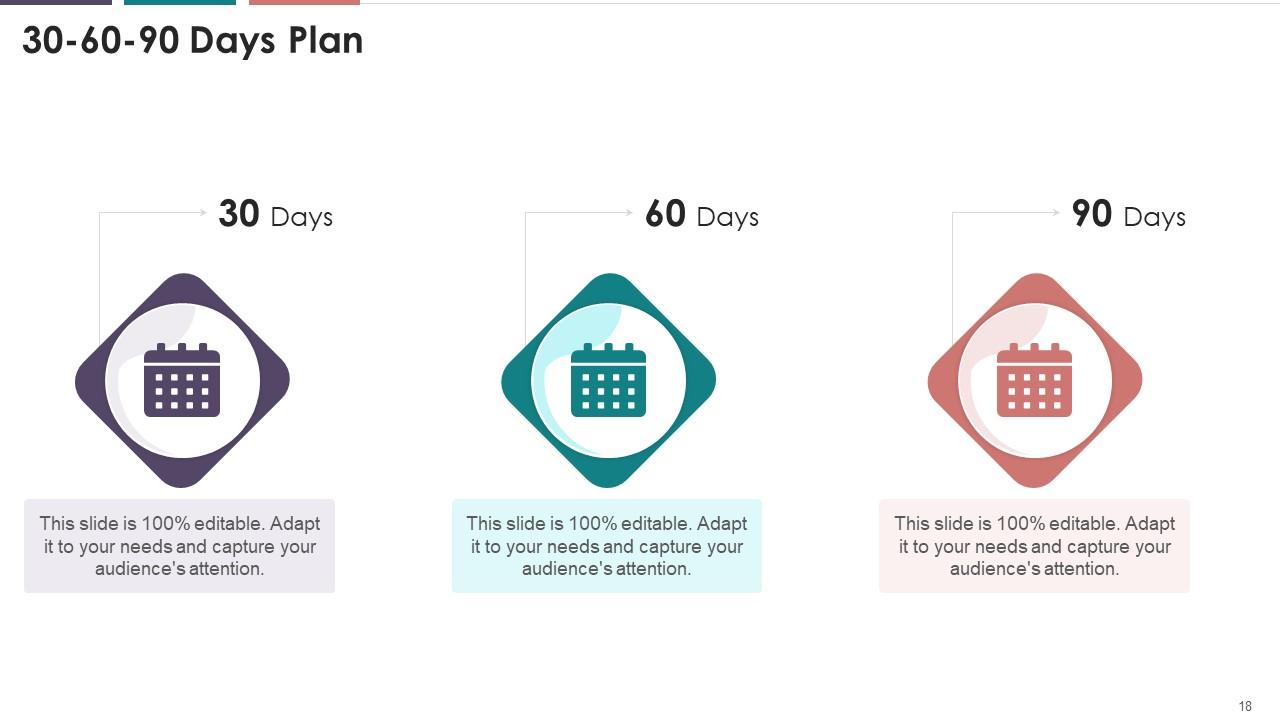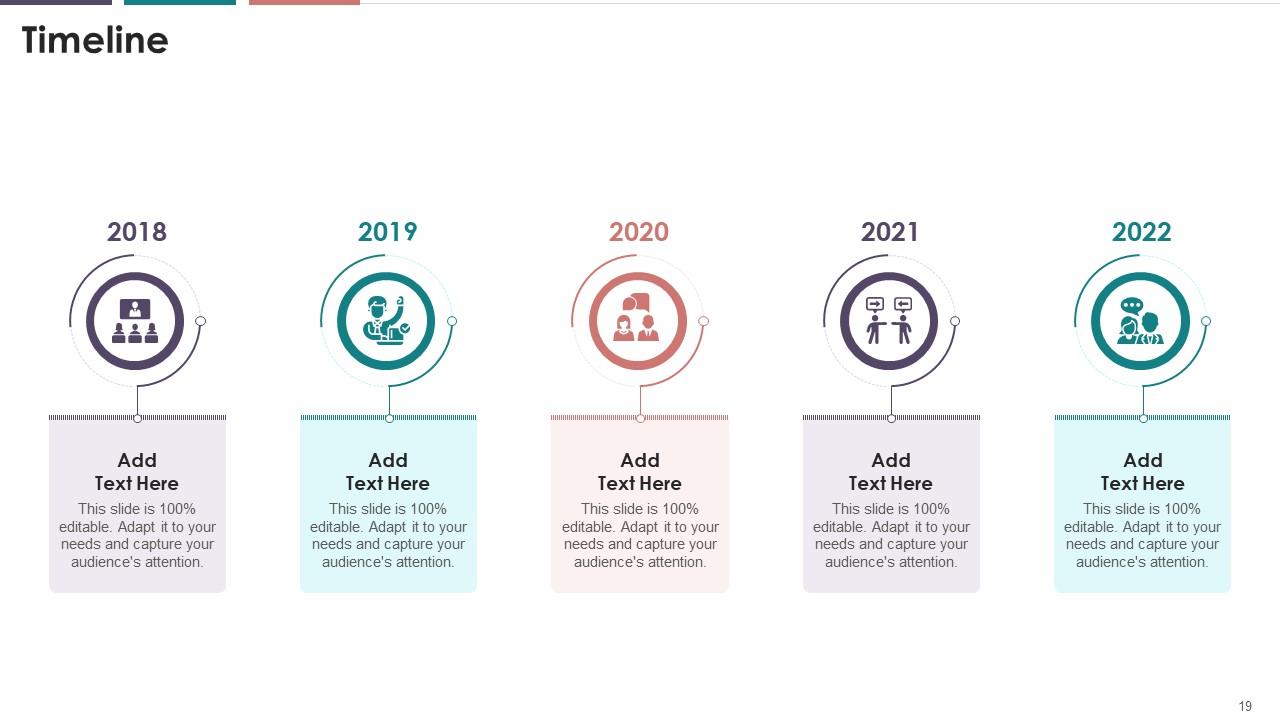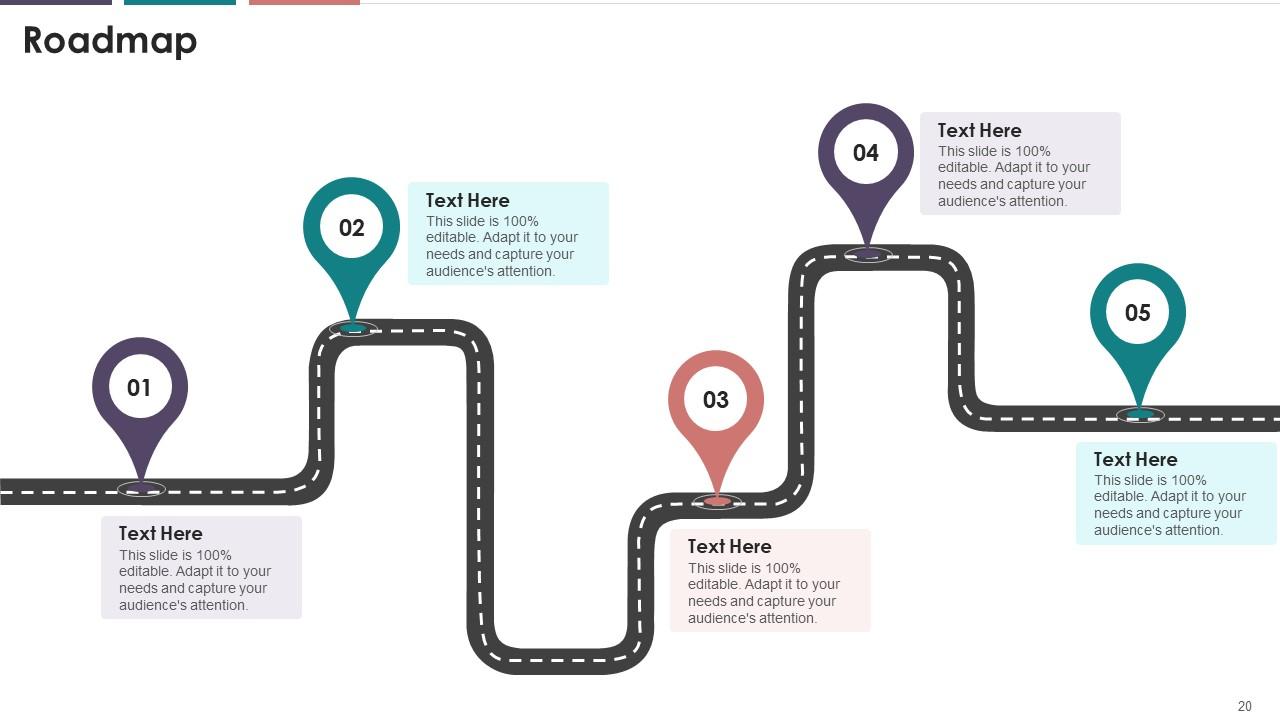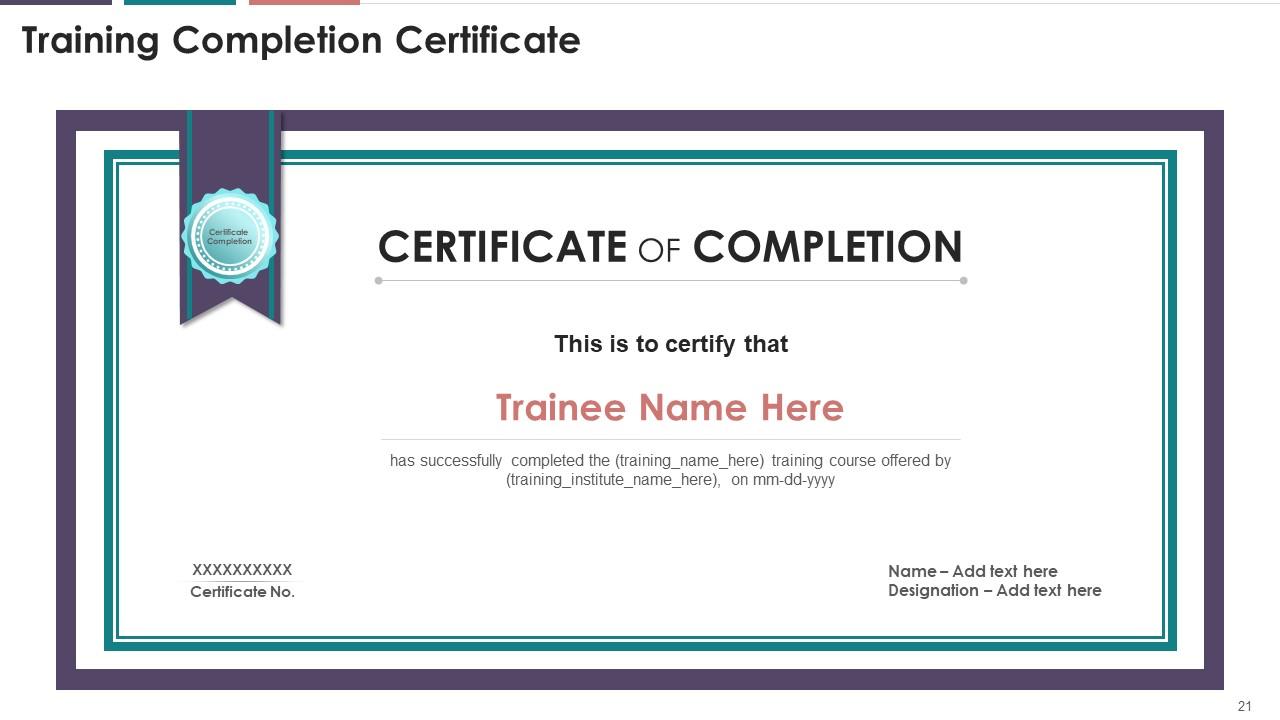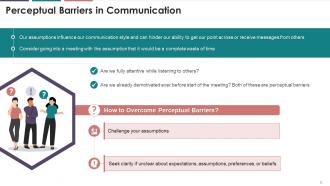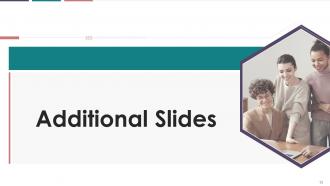Multiple Barriers In Communication With Activities Training Ppt
This set of slides covers the barriers in business communication such as physical, cultural, language, perceptual, interpersonal, gender, and emotional barriers. It also includes information on strategies on how to overcome mentioned barriers. Further, it includes case studies to develop empathy and identify the type of communication barrier among training participants.
This set of slides covers the barriers in business communication such as physical, cultural, language, perceptual, interper..
- Google Slides is a new FREE Presentation software from Google.
- All our content is 100% compatible with Google Slides.
- Just download our designs, and upload them to Google Slides and they will work automatically.
- Amaze your audience with SlideTeam and Google Slides.
-
Want Changes to This PPT Slide? Check out our Presentation Design Services
- WideScreen Aspect ratio is becoming a very popular format. When you download this product, the downloaded ZIP will contain this product in both standard and widescreen format.
-

- Some older products that we have may only be in standard format, but they can easily be converted to widescreen.
- To do this, please open the SlideTeam product in Powerpoint, and go to
- Design ( On the top bar) -> Page Setup -> and select "On-screen Show (16:9)” in the drop down for "Slides Sized for".
- The slide or theme will change to widescreen, and all graphics will adjust automatically. You can similarly convert our content to any other desired screen aspect ratio.
Compatible With Google Slides

Get This In WideScreen
You must be logged in to download this presentation.
PowerPoint presentation slides
Presenting Different Barriers in Communication Physical Language Cultural Perceptual Interpersonal Gender Emotional with Activities. This PPT presentation is thoroughly researched by the experts, and every slide consists of appropriate content. All slides are customizable. You can add or delete the content as per your need. Download this professionally designed business presentation, add your content, and present it with confidence.
People who downloaded this PowerPoint presentation also viewed the following :
Content of this Powerpoint Presentation
Slide 1
The slide lists down the major barriers in business communication such as physical barriers, cultural barriers, language barriers, perceptual barriers, interpersonal barriers, gender barriers and emotional barriers.
Slide 2
This slide depicts that any physical element or factor that acts as a distraction to obstruct the flow of communication is a physical barrier in communication.
Instructor’s Notes:
Some of the most significant physical barriers in an organization are as follows:
- Inadequate lighting
- Noise in the background
- Closed Doors
- Geographical distances between message sender and receiver
Types of Physical Barrier in Communication
- Noise: The most common physical barriers to listening is noise. Noise impedes the flow of messages, causes them to be inaccurate or unclear, and leads to misinterpretations. Environmental noise, technological noise, and written noise are all examples of noise. A message that is poorly written or printed is an example of written noise
- Excessive Information: Communication can suffer when the amount of information is too large for a person to store or process. The sender may have a lot of information to share but no way to process it. The inability to send or receive large amounts of printed data is a physical barrier
- Distortion: A distorted message is one that has been misrepresented or misinterpreted. It happens when the meaning of a message is lost in translation or during decoding
Slide 3
This slide depicts the information regarding cultural barrier. It occurs when people are unaware of cultural differences.
Slide 4
This slide covers the information regarding language barrier. It occurs when people speaking different languages cannot communicate.
Instructor’s Notes:
Types of language barriers
- Language difference: It occurs when a person interacts with someone who speaks a different native language
- Dialects and accents: It occur when two people share the same language but speak it differently
- Lack of clear speech: It occurs when people speak too softly or too quickly. In either case, it is unclear what they are saying
- Technical terms or jargon: It occurs when someone communicates using highly technical and subject-specific terms
- Word choice: It occurs when someone uses words with two meanings or says something sarcastically that the listener may misinterpret
Slide 5
This slide covers the information regarding perceptual barrier. These are mental roadblocks caused by internal biases we have about people or events around us.
Instructor’s Notes:
Types of perceptual barriers
- Selective perception - It entails paying attention to information that supports your ideas while ignoring the rest
- Stereotypes - A stereotype is an oversimplified mental picture associated with a specific group (e.g., women are emotional and fat people are jolly)
- Halo effect - In organizations, the halo effect occurs when managers provide overly favorable evaluations of employees based on isolated successes
- Projection - The tendency to attribute one's own beliefs, feelings, tendencies, motives, or needs to other people
- Expectations - An expectation is the tendency to find what one expects to find in a situation or a person. Our expectations greatly influence how we perceive the world around us
Slide 6
This slide covers the information regarding interpersonal barriers, and it is most challenging to overcome because they are based mainly on personality.
Slide 7
This slide covers the information regarding Gender Barriers in Communication. These are barriers that arise due to the different ways in genders communicate.
Slide 8
This slide depicts the information regarding emotional barriers, which is a mental limitation to communicate your thoughts and feelings openly.
Instructor’s note: Types of emotional Barrier
- Anger - Anger is an emotional barrier to communication that affects how your brain processes information. A person is less likely to be logical in discussions because of anger. Moreover, a person is less likely to contribute constructively to problem-solving and more likely to oppose other people's ideas
- Pride - It is an emotional barrier to communication that hinders healthy communication in a variety of ways. Pride as an emotion implies that you are proud of what you say and do. This means that you talk more than you listen
- Anxiety - It is another emotional barrier to effective communication, and it can harm communication skills and effectiveness. People won't concentrate on what others are saying because they will be preoccupied with what they want to say. Furthermore, anxiety may cause them to avoid social situations, even in a professional setting
Slide 9
This slide depicts an activity that the trainees can perform during their training session that will allow participants to develop empathy and better understanding among colleagues.
Instructor’s Notes:
- The activity allows all participants to develop empathy and improve the understanding of their colleagues' or group members' reactions
- Each member must portray the emotion in a specific amount of time, perhaps a minute or two
- Acting opportunity should be shared equally between the two teams
Slide 10
This slide showcases an activity that the trainees can perform during their training session to identify the type of communication barrier.
Multiple Barriers In Communication With Activities Training Ppt with all 26 slides:
Use our Multiple Barriers In Communication With Activities Training Ppt to effectively help you save your valuable time. They are readymade to fit into any presentation structure.
-
I loved the hassle-free signup process. A few minutes and, I had this giant collection of beautiful designs.
-
I am so thankful for all of the templates I've found on your site. They have saved me hours every week and helped make my presentations come alive. Keep up with these amazing product releases!


